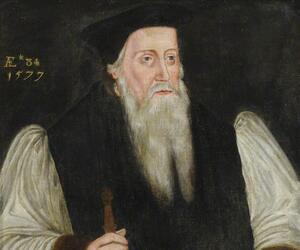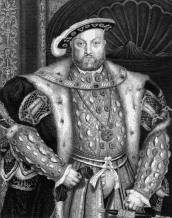Beyond The Monarchs: A Glimpse Into The Lives Of People In The 1500s
The 1500s, often synonymous with the 16th century (1501-1600), was a period of monumental change, discovery, and upheaval across the globe. It was an era that saw the world expand, beliefs challenged, and artistic expression reach new heights. From powerful emperors to intrepid explorers, groundbreaking artists to ordinary citizens navigating a rapidly evolving world, the people of the 1500s laid the foundations for much of what we recognize today. This article delves into the lives of these individuals, exploring the major events that shaped their existence and highlighting some of the most influential figures who left an indelible mark on history.
A World in Motion: Major Events Shaping Lives
The 1500s were characterized by dynamic shifts in geography, religion, and politics. These macro-level changes profoundly impacted the daily lives and opportunities of people, from the highest nobility to the humblest peasant.
Exploration and Encounter
- The Age of Discovery Continues: The turn of the century saw a continued push into uncharted territories. On January 26, 1500, Spanish navigator Vicente Yáñez Pinzón reached the northern coast of Brazil, marking another significant step in European exploration of the Americas.
- The Arrival of Enslaved Africans: A darker chapter in this era of exploration was the forced migration of people from Africa. The first black slaves in America were brought to the Spanish colony of Santo Domingo, laying the groundwork for centuries of transatlantic slave trade and profoundly impacting the demographics and social structures of the New World.
- Conquest and Circumnavigation: The early 1500s witnessed dramatic conquests and voyages of unprecedented scale. Between 1519 and 1521, Hernán Cortés led the Spanish conquest that defeated the mighty Aztec Empire, forever altering the course of Mesoamerican history. Simultaneously, Ferdinand Magellan embarked on the first circumnavigation of the Earth. Though Magellan himself was tragically killed by Philippine natives in 1521, one of his ships, under the command of Juan Sebastián Elcano, completed the arduous journey, proving the world was indeed round and interconnected.
- First Steps into the American West: The spirit of exploration wasn't confined to sea voyages. A remarkable journey saw the first men from Europe and Africa enter the American west. These were Álvar Núñez Cabeza de Vaca, Alonso del Castillo Maldonado, Andrés Dorantes de Carranza, and a slave named Estevanico, whose incredible trek across the continent opened new perspectives on its vastness.
Religious and Political Upheaval
- The Protestant Reformation: Perhaps no single movement had a more profound and widespread impact on the lives of people in the 1500s than the Protestant Reformation. Beginning in the early part of the century, it challenged the authority of the Catholic Church, leading to religious wars, the formation of new denominations, and significant shifts in political power across Europe. In England, for instance, Lutheran writings began to circulate as early as 1521, setting the stage for King Henry VIII's dramatic break with Rome in 1525, when he sought an annulment that would reshape the religious and political landscape of the nation.
- Italian Wars and Shifting Alliances: Europe was a patchwork of kingdoms and empires often embroiled in conflict. The Second Italian War, for example, saw intense skirmishes for control of strategic cities. On January 5, 1500, Duke Ludovico Sforza briefly recaptured Milan, only to be driven out again by the French. A month later, on February 5, Ludovico Sforza's Swiss mercenary army retook the city, illustrating the volatile nature of political power and the constant threat of warfare that many people lived under.
Minds and Masters: Influential Figures of the 1500s
The 1500s were home to an extraordinary array of talent, from artistic geniuses to powerful rulers and intellectual giants. While some historical lists might mistakenly include figures from earlier centuries, the 1500s had its own distinct set of luminaries.
- Unique Hairstyles Women
- Summer Cute Hairstyles
- Bob Haircut 2025
- Megan Thee Stallion Hands
- Best Jeans To Hide Tummy
The Luminaries of Art and Culture
The Renaissance reached its zenith in the early 1500s, producing masterpieces that continue to inspire awe:
- Leonardo da Vinci: Though born in the mid-1400s, Leonardo da Vinci continued his prolific work into the 1500s, famously painting the enigmatic Mona Lisa during this period. His genius spanned art, science, and engineering, embodying the Renaissance ideal.
- Michelangelo: Another titan of the High Renaissance, Michelangelo sculpted the breathtaking David in 1504, a work that redefined the human form in art. He was also instrumental in the design and decoration of St. Peter's Church, which began construction in Rome during this century, a testament to the era's grand architectural ambitions.
- Tansen: Beyond Europe, the 1500s also saw the rise of legendary figures like Tansen, a prominent musician and composer in the court of the Mughal emperor Akbar in India. His musical innovations and mastery of Hindustani classical music cemented his legacy as one of the greatest musicians in history.
- Benvenuto Cellini: A Florentine goldsmith, sculptor, and writer, Cellini's autobiography offers a vivid, if sometimes exaggerated, account of life as an artist during the Renaissance, showcasing the blend of craftsmanship, ambition, and patronage that defined the era.
Rulers, Reformers, and Explorers Born in 1500
The year 1500 itself saw the birth of several individuals who would go on to shape the century:
- Charles V, Holy Roman Emperor: Widely considered the most famous person born in 1500, Charles V inherited a vast empire that spanned much of Europe and the Americas. His reign was marked by constant warfare, the rise of the Protestant Reformation, and efforts to maintain the unity of his sprawling domains.
- Hernando de Soto: An intrepid Spanish explorer and conquistador, de Soto played a significant role in the conquest of Peru and later led one of the first European expeditions deep into the territory of modern-day United States, searching for gold and a passage to China.
- Reginald Pole: A prominent English cardinal and the last Catholic Archbishop of Canterbury, Pole was a key figure in the English Reformation, initially opposing Henry VIII's policies and later serving under Queen Mary I in her efforts to restore Catholicism.
- Nicholas Ridley: A leading English Protestant reformer and Bishop of London, Ridley was a staunch advocate for the Reformation. He was famously martyred for his faith in 1555, becoming a symbol of the religious struggles of the era.
Everyday Life: Glimpses into 16th-Century Society
While we often focus on grand events and famous figures, the lives of ordinary people in the 1500s were shaped by their immediate surroundings. Life was largely agrarian, with most people living in rural areas, though urban centers were growing. Social hierarchies were rigid, and the Church played a central role in daily life, dictating moral codes and influencing education and culture.
- Little Presents For Friends
- Ina Garten Sour Cream Cornbread
- Pastel Colour Hair
- Pubic Area Exfoliant
- Nails Mix And Match
The challenges of the era included widespread disease, famine, and limited access to communication and travel. Despite these hardships, communities thrived, and local traditions persisted. Common sayings and expressions, as suggested by articles discussing "Life in the 1500s," often sprang from these ordinary living conditions, reflecting the practicalities and beliefs of the time. These phrases offer a fascinating, albeit anecdotal, window into the everyday experiences and shared wisdom of people in this dynamic century.
Conclusion
The 1500s were a crucible of change, a period where the medieval world gave way to the early modern. The people of this era, whether they were the powerful monarchs like Charles V, revolutionary artists like Michelangelo, daring explorers like Magellan and de Soto, or the millions of unnamed individuals navigating daily life, collectively forged a new path for humanity. Their struggles, triumphs, and innovations laid the groundwork for the scientific, political, and cultural developments of subsequent centuries. Understanding the lives of people in the 1500s offers invaluable insight into the forces that shaped our world, revealing an era of immense transformation and enduring legacy.
In summary, the 1500s were defined by groundbreaking explorations that connected continents, profound religious and political upheavals like the Reformation, and the flourishing of unparalleled artistic and intellectual talent. Key figures such as Charles V, Leonardo da Vinci, and Michelangelo left an indelible mark, while the lives of ordinary people were shaped by agrarian routines, social structures, and the pervasive influence of religion. This period was a true turning point, laying the foundations for the modern world.
Article Recommendations
- Unique Hairstyles Women
- Bachelor In Paradise Next Season
- Do Alfie And Emily Get Back Together
- Cara Delevingne Brown Hair
- How To Tone Down Brassy Highlights



Detail Author:
- Name : Ryley Dare
- Username : darius.hammes
- Email : hodkiewicz.layla@fahey.net
- Birthdate : 1991-02-03
- Address : 1648 Eula Rest Apt. 062 Jacobsonland, DE 47470
- Phone : +1-574-503-6070
- Company : Krajcik LLC
- Job : Webmaster
- Bio : Ea explicabo id est inventore sequi. Enim corrupti numquam est dolor. Sit quia perspiciatis qui enim corporis accusamus cumque. Consequatur soluta eveniet quia est facilis cumque.
Socials
facebook:
- url : https://facebook.com/johnnie_official
- username : johnnie_official
- bio : Sed minus sunt facilis voluptas. Rerum illum quaerat ducimus ea veniam ut.
- followers : 5255
- following : 2318
tiktok:
- url : https://tiktok.com/@johnnieorn
- username : johnnieorn
- bio : Ut fugiat consequatur est. Dolores et aut dolor quia voluptatem.
- followers : 3281
- following : 2715
instagram:
- url : https://instagram.com/ornj
- username : ornj
- bio : Itaque et adipisci omnis vel ut. Inventore ut velit numquam eum.
- followers : 5838
- following : 1536